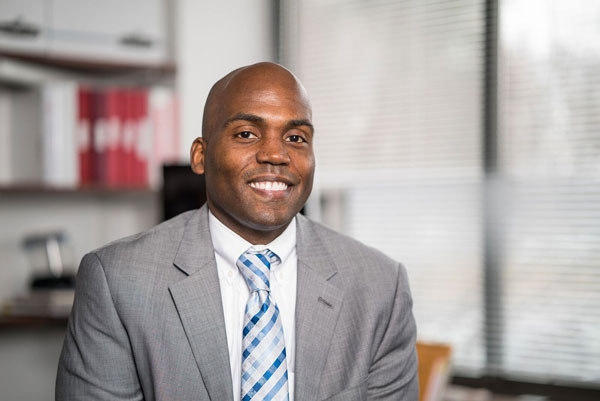CHLOE KOWALYK
Staff Writer
Approximately 80 years ago, thousands of Black Americans began the organized effort to gain equal rights under the law.
No more than a decade later, the civil rights movement began after Rosa Parks boycotted public transportation.
Today, millions of Americans have joined the Black Lives Matter movement, protesting against police brutality, racially-motivated violence and systemic racism.
The many similarities between the movements was the subject of Dr. Yohuru Williams’ presentation.

Williams is a distinguished university chair, professor of history and the founding director of the University of St. Thomas’ Racial Justice Initiative.
He is also an author, editor and has appeared on several local and national TV and radio programs.
Williams’ discussion, titled “Simply because people refuse to see me: The Black Lives Matter movement in historical context,” was presented by the Intercultural Center and SUNY Fredonia’s Black Student Union.
Williams began his presentation by saying that he hopes to “alter the way that we’re thinking about our contemporary moment and how we frame this in the long struggle of racial inequality.”
He explained to attendees that the fight for racial equality in the civil rights movement never really ended, as shown through the Black Lives Matter movement and killing of George Floyd.
Hoping to link the two movements in his presentation, Williams describes what he calls, “‘there goes my everything’ moments.”
These “moments” include “all lives matter” and “blue lives matter” protests and the comparison of the events on Jan. 6 at the Capitol to the Black Lives Matter protests in the summer of 2020.
These events set back the efforts of the Black Lives Matter movement, which for many, was their “everything.”
Williams said that the similar symbols of political divide and racial terror are present at both lynchings and the events at the Capitol, such as confederate flags and nooses.
He said that through these symbols and the police violence that happened during the civil rights movement, “we can see the roots of Black Lives Matter” in the history of our country.
The main point that Williams drives home is that we can frame the Black Lives Matter movement in the context of the civil rights movement.
A section of the title of his presentation, “Simply because people refuse to see me,” is a quote from Black writer Ralph Ellison’s award-winning book, “The Invisible Man.”
Williams incorporated the words of many Black Americans, such as Martin Luther King Jr., Thurgood Marshall, Ida B. Wells, Melba Patillo Beals, Jackie Robinson and Shirley Chisholm to enhance his presentation.
The presentation then shifted to the topics of education and responsibility.
Williams told attendees about one of Beals’ diary entries, where she asks if what was happening in Little Rock was truly this big of a deal, then why wasn’t anyone telling the white students of Central High to behave themselves? Williams explained that this boils down to education.
Quoting Marshall, he recited, “[Black children] have been struggling with democracy long enough,” and therefore they are already very experienced and knowledgeable about it.”
Marshall worried more about the white children who did not have this same experience and were taught that the way democracy works is to break the law and attack others.
Williams stressed to the attendees that it is so important for students to learn compassion and view history from different perspectives.
Later in his presentation, Williams referenced the death of Jimmie Lee Jackson, who was murdered by an Alabama state trooper. He asked attendees who was truly responsible for Jackson’s death.
Paraphrasing King, he said that it was the lack of action of the federal government, white Americans who were too indifferent to make change and the cowardice of Black Americans who were too timid to stand up and fight that were responsible for his death.
Here, Williams shows us yet another direct link between the civil rights movement and the Black Lives Matter movement.
The similarity of Jackson’s death and today’s police brutality isn’t just racial violence, but also the need for individuals to stand up for what they believe in.
Near the end of his presentation, he reflected on the many ways Americans have tried to take their country back. “Wounds produce narratives,” Williams said, “people talk about taking our country back.”
He remembered Emmett Till’s mother and how she had an open casket funeral for her son, and how, in his words,“the echoes of the past are powerful.”
He thinks about Lebron James and the changes he has advocated for. Both Till and James are working to take the country back.
Those “wounds” in both the past and present are creating narratives that will inspire all Americans to take charge of their country.
“I think Black Lives Matter has been incredibly effective in pushing the movement to the next level,” Williams said.
With that, he asks, “whether we can actually push our democracy in this moment to live up to the promise of what it is we want to project, than what we haven’t quite accomplished.”
